Creating a place that counterbalances images and their physical medium
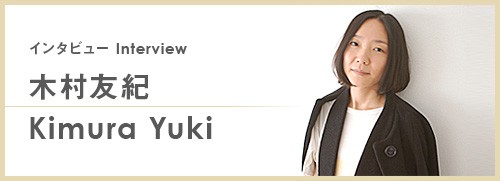
Times, places, cultures. The myriad encounters of this world are not confined to being in the same place at the same time and engaging in conversation. Coinciding with Kimura Yuki’s latest solo show, we spoke with this artist who deals in chance (or predestined?) encounters with nameless photographs and events, reconfiguring her own internal ‘connections’.
Interview: Matsuura Naomi
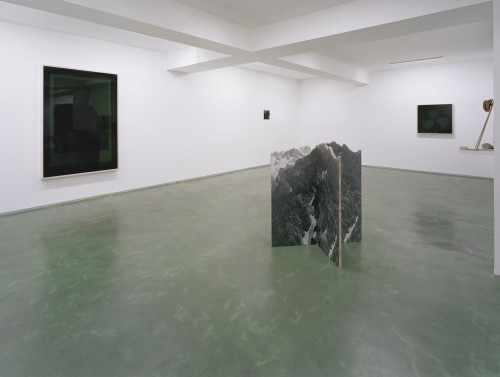 Year 1940 was a leap year starting on Monday Installation view at Taka Ishii Gallery
Year 1940 was a leap year starting on Monday Installation view at Taka Ishii Gallery Photo Ichikawa Yasushi
– Your exhibition at the Taka Ishii Gallery is called Year 1940 was a leap year starting on Monday. How did you come up with that title?
Most of the images in this show are from German photographs. One had something like a letter written on the back, and I realized it was a Christmas card from a woman to her aunt and uncle, dated 24 December 1940. Making that photo central, I then selected several others for the way they looked (that is, by the picture alone), but on investigation found them all to be clustered in or around the year 1940. Prior to that I’d consciously mixed photos with the properties of different eras in single installations, but on this occasion the year 1940 emerged so clearly that I decided to try engaging solely with that.
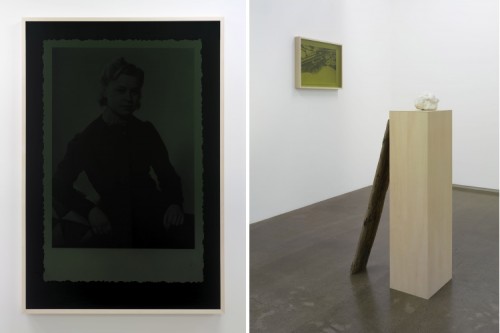 Ursel (24,XII,40) 2009 Lambda print mounted on plexiglass, colored plexiglass, frame 190 x 130 x 7.9 cm
Ursel (24,XII,40) 2009 Lambda print mounted on plexiglass, colored plexiglass, frame 190 x 130 x 7.9 cm(Right) Year 1940 was a leap year starting on Monday Installation view
Photos Ichikawa Yasushi
In practical terms this involved asking an acquaintance to decipher the German on the back of the photos, and as we went back and forth on this, a picture of the period gradually began to emerge: of the year 1940 and World War Two as its backdrop, the old script banned because of the war, that sort of thing. Thinking then I should find out more about the year 1940, I searched ‘1940’ on Wikipedia, and the first thing that came up, writ large, was that line. For a moment I was stunned. Here was me expecting something concrete, only to have that expectation confounded completely. At the same time the sentence began to exert an irresistible pull on me. For example, the phrase ‘starting on Monday’ was a reminder that if I traced all the way back along all those Mondays, Tuesdays and Wednesdays that had marked the progress of my daily life, eventually I’d reach 1940. It also reminded me of my shock as a child on first learning of leap years. With my imagination thus flying off in different directions, I decided to try making an installation revolving around those words.
– Does the resulting installation possess a narrative of any sort?
No. But I suppose my works do always have what one might call a visual narrative, something of a different dimension to a verbal narrative or so-called story; a narrative devoid of any temporal quality.
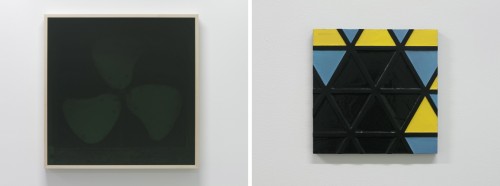 Mondays 2009 Lambda print mounted on alpolic, colored plexiglass, frame 82.9 x 82.9 x 6.7cm
Mondays 2009 Lambda print mounted on alpolic, colored plexiglass, frame 82.9 x 82.9 x 6.7cm(Right) Suetterlin-Schrift 2009 Wood, lacquer, acrylic 30 x 30x 2 cm
Photos Yasushi Ichikawa
– ‘Found photos’ have formed the nucleus of your work since you completed a residency in the United States in 2003. Commenting on you the art critic Shimizu Minoru defined your found photos as “a series of ‘intriguing photographs’ the artist happened to come across amongst a stack of amateur snaps that found their way into a flea market”1. But what do ‘found photos’ mean to you?
First of all, let me say flea markets and the like are not my sole source. Photos I’ve taken years ago while traveling for example, can suddenly take on the character of a work when a particular theme crops up. So for me found photos have a broader meaning: of starting not by taking a photo but by seeing something that has been taken and already exists.
– Tell us about the process involved in searching for photos. Do you have any special criteria for choosing pictures?
I suppose when people hear that I create art out of collected photos they imagine I put a lot of effort into collecting, that the collecting is the main point. But it’s a rather more mundane than that. It’s not about deliberately aligning photos with a particular purpose; more a sense of picking up things lying by the roadside, or finding myself naturally attracted to a thing. If I do have one condition for selecting photos, it would be a sense of déjà vu.
– You seem to use a lot of Western photos: is this a conscious choice?
No, it’s not a decision I’ve made, especially. It just happens that private photos like this are easy to get hold of in places like New York and European cities, which in turn means a high proportion of my photos come from these places. Another reason is that I find it easier to expand my vision and conjure up ideas about places when I don’t actually know them.
– So it’s important to you to separate your image of a place from the actual place?
What I mean is that the past evoked by a photo is a thought, while the photo itself is in the here and now. I want to prompt a focus on the present we see now. Photographs are physical matter, images on paper, but my aim is to create a place that counterbalances those images and their physical medium.
– You’ve used acrylic panels as ‘shadows’ in your work before. I notice this time there are acrylic shadows in dark colors covering the entire image.
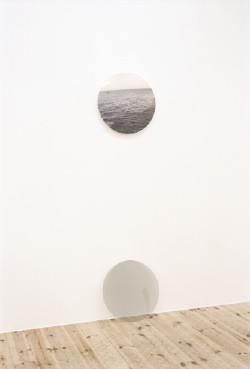 image and the shadow 01 2005
image and the shadow 01 2005Lambda print mounted on plexiglass, plexiglass D40cm each
Photo Homma Takashi
Up to now my shadows have served to stress the material nature of photographs. I’ve propped up pieces of grey acrylic under the photos and dubbed them shadows. This time I’ve put photos ‘in shadows’, but I confess I’m not yet entirely sure what that means. I tend to come up with the visual idea first, as in, ‘maybe this would work’, and that synchronizes automatically with what I’m thinking. So I suspect it’ll be a little while yet before these latest ‘shadow frames’ are expressed clearly in words.
– Finally, a message for our readers?
Don’t assume the work on show is going to be difficult: just view it in whatever way feels best for you.
Kimura Yuki
Born 1971 in Kyoto. MFA in painting from Kyoto City University of Arts. Practice involves installations using photographs, video and objects. In summer 2009, Kimura staged the show Posteriority, a collection of her work including the latest installation, at the Daiwa Press Viewing Room in Hiroshima. A photo book based on this exhibition – Daiwa Press Viewing Room vol. 09: Kimura Yuki – is due for release in October. Year 1940 was a leap year starting on Monday. was held from 10 October – 7 November 2009 at the Taka Ishii Gallery (Tokyo).
All images courtesy Taka Ishii Gallery
